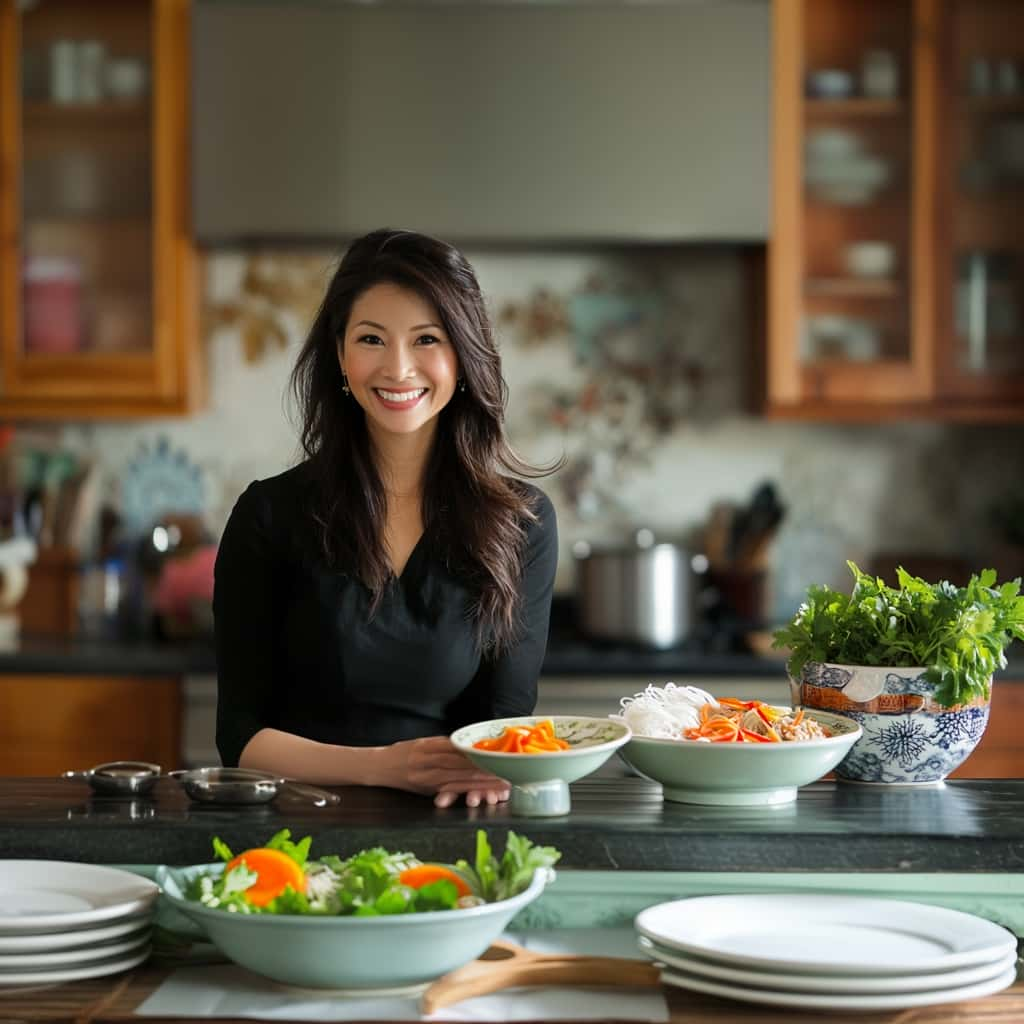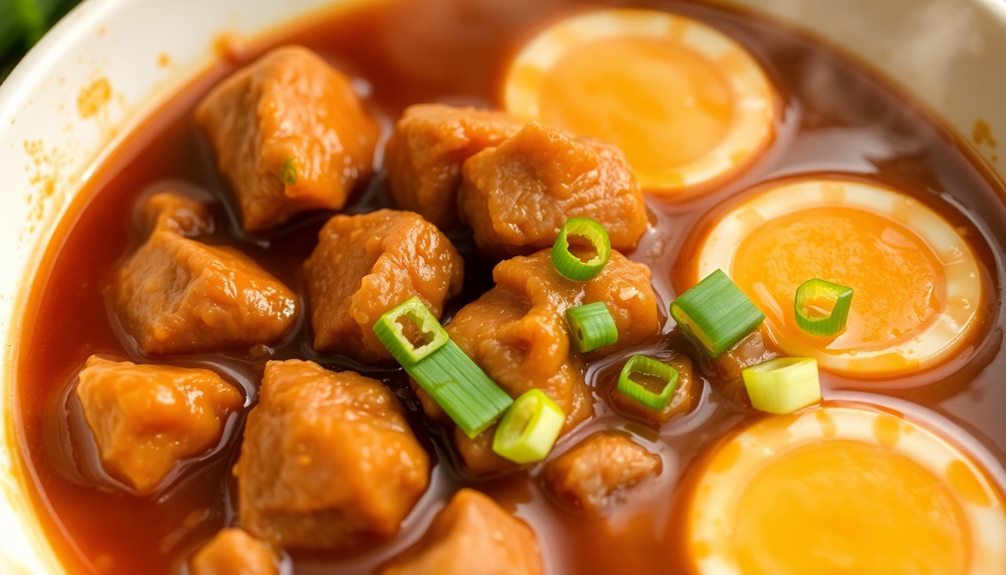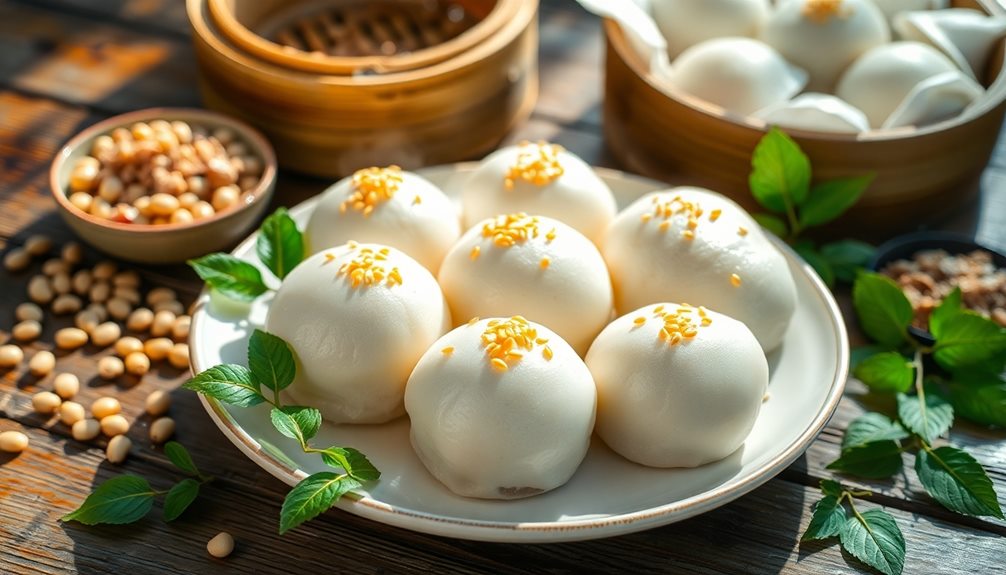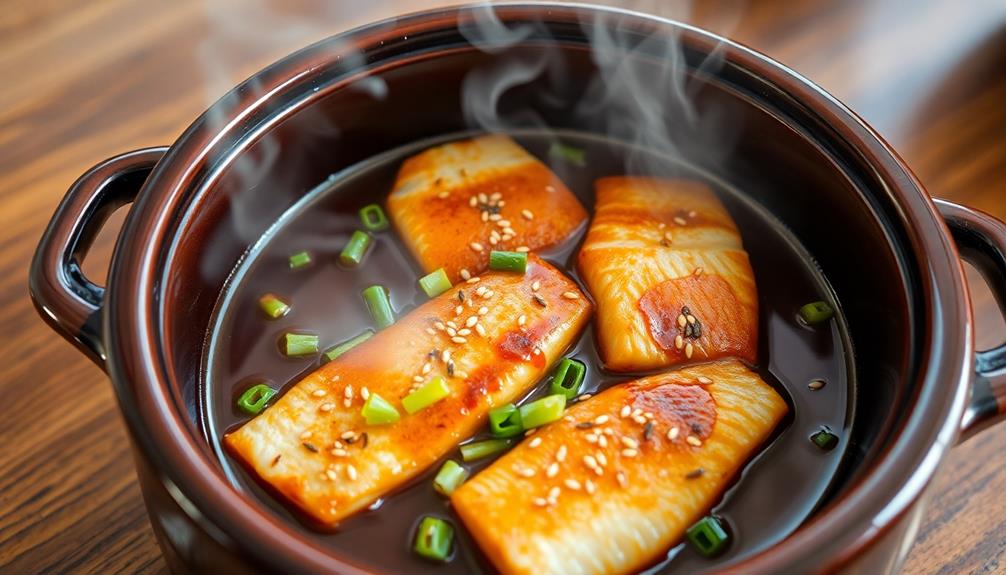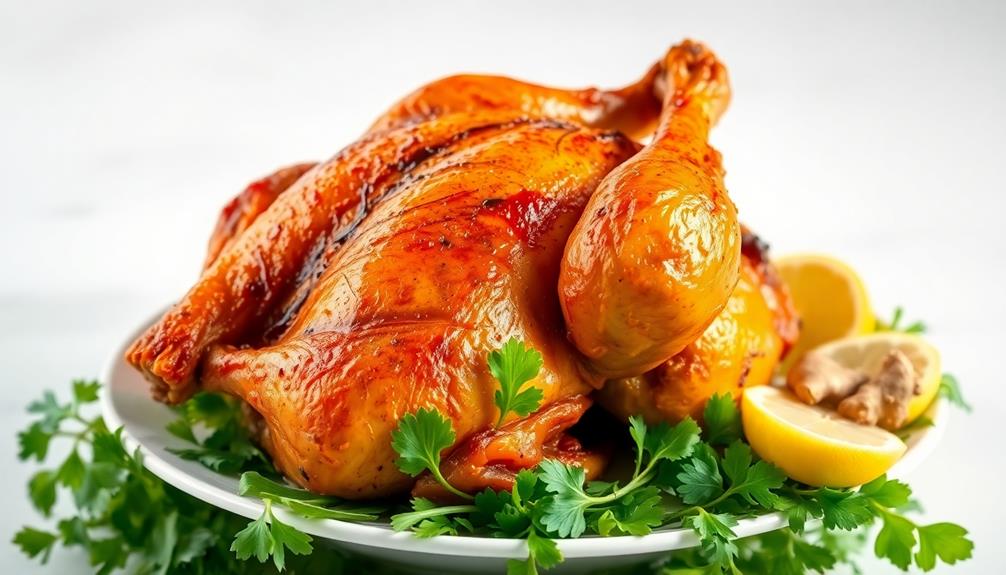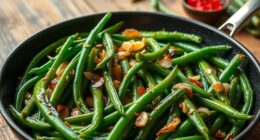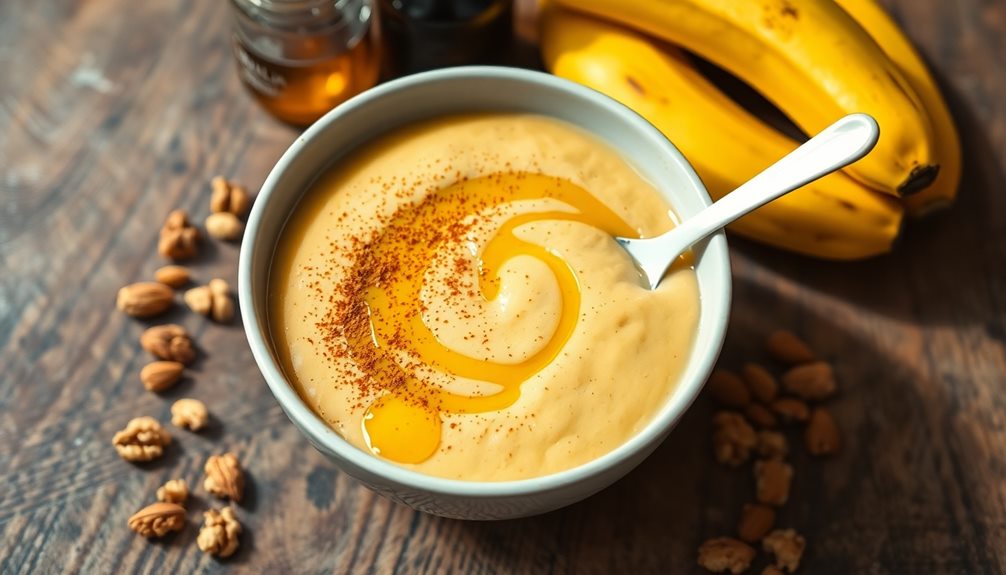You'll be delighted to discover the soft, chewy delight that is bánh dày, Vietnam's beloved rice cake with a rich history spanning agricultural societies. This traditional treat originated as a staple food, evolving into regional variations with northern styles being softer and chewier while southern versions are more glutinous. To make these delectable cakes, you'll first soak the glutinous rice, then steam and knead it into a smooth paste. After steaming the cakes and letting them cool, you'll slice them into perfect bite-sized pieces – a true celebration of Vietnam's vibrant culinary heritage. And there's so much more to uncover about this beloved delicacy. Bánh dày is often enjoyed plain, but can also be paired with savory fillings like mung bean paste or even pork, making it versatile for both festive events and daily snacks. In fact, it shares commonalities with other beloved Vietnamese treats, like bánh rán, which are Vietnamese glutinous rice doughnuts filled with sweet or savory ingredients and deep-fried to perfection. Both dishes showcase the remarkable adaptability of glutinous rice in Vietnamese cuisine, turning a simple ingredient into beloved comfort food brimming with cultural significance.
Key Takeaways
- Bánh dày is a traditional Vietnamese rice cake that originated from early agricultural societies and has evolved into regional variations.
- The northern-style bánh dày is soft and chewy, while the southern variants are more glutinous, reflecting Vietnam's diverse culinary heritage.
- The preparation process involves soaking glutinous rice, steaming, and kneading the dough to achieve the perfect texture.
- Cooling the steamed rice cakes is crucial for developing the chewy and sticky consistency that characterizes bánh dày.
- Bánh dày represents the ingenuity and cultural richness of Vietnamese cuisine, transcending its status as a snack to embody enduring traditions.
History
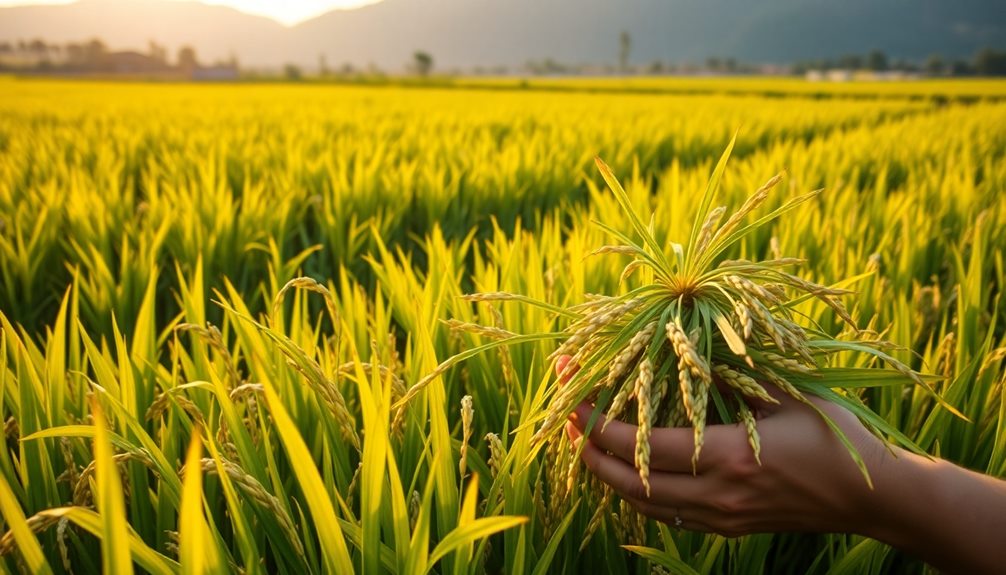
Bánh Dày, Vietnam's beloved rice cake, has a rich history dating back centuries. This humble yet delectable treat has been a staple in Vietnamese cuisine for generations, reflecting the country's deep-rooted traditions and culinary heritage.
The origins of Bánh Dày can be traced back to the early agricultural societies of Vietnam, where rice was a fundamental crop. As these communities developed, they began experimenting with various methods of processing and preparing rice, leading to the creation of Bánh Dày. The name itself translates to "pressed cake," alluding to the unique technique used in its preparation.
Over time, Bánh Dày evolved, with different regions of Vietnam developing their own distinctive variations. From the soft and chewy northern-style Bánh Dày to the more glutinous southern variants, each iteration showcases the ingenuity and creativity of Vietnamese cooks.
Today, Bánh Dày remains a beloved part of Vietnam's cultural tapestry, connecting generations through its timeless flavors and traditions.
Cooking Steps
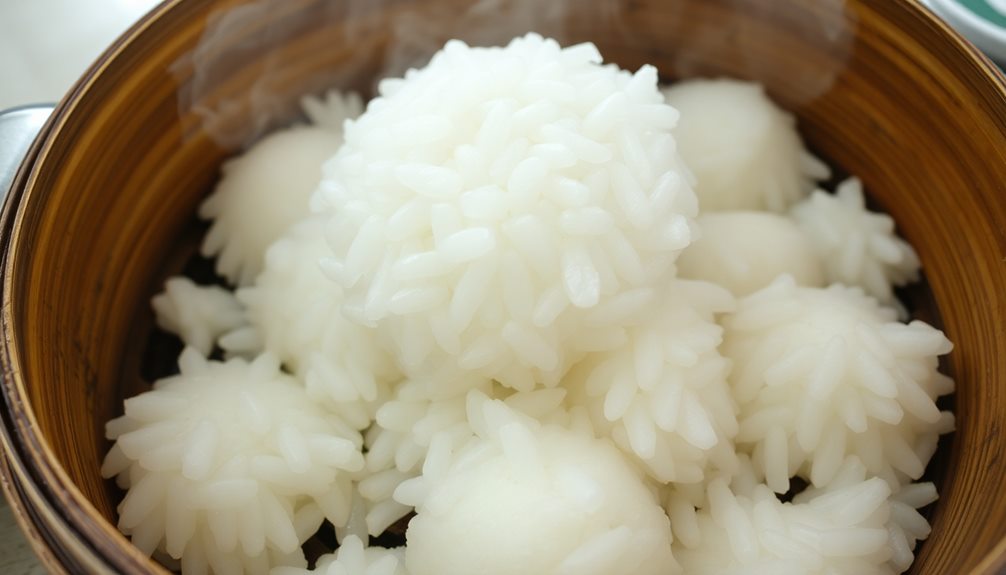
How do you begin the process of making bành dày, Vietnam's beloved rice cake? First, gather your ingredients: glutinous rice, water, and a pinch of salt. Soak the rice in water for at least 4 hours, or overnight, until the grains are soft and pliable.
Next, drain the soaked rice and transfer it to a steamer. Steam the rice for 30-45 minutes, or until it's cooked through and fluffy.
Once steamed, transfer the rice to a large bowl and knead it vigorously for about 10 minutes. This step is crucial, as it helps develop the sticky, chewy texture of the dough.
After kneading, divide the dough into small, golf-ball-sized pieces. Roll each piece between your palms to create a smooth, round shape. Place the dough balls on a lightly greased surface and let them rest for 15-20 minutes.
Step 1. Soak Rice Overnight
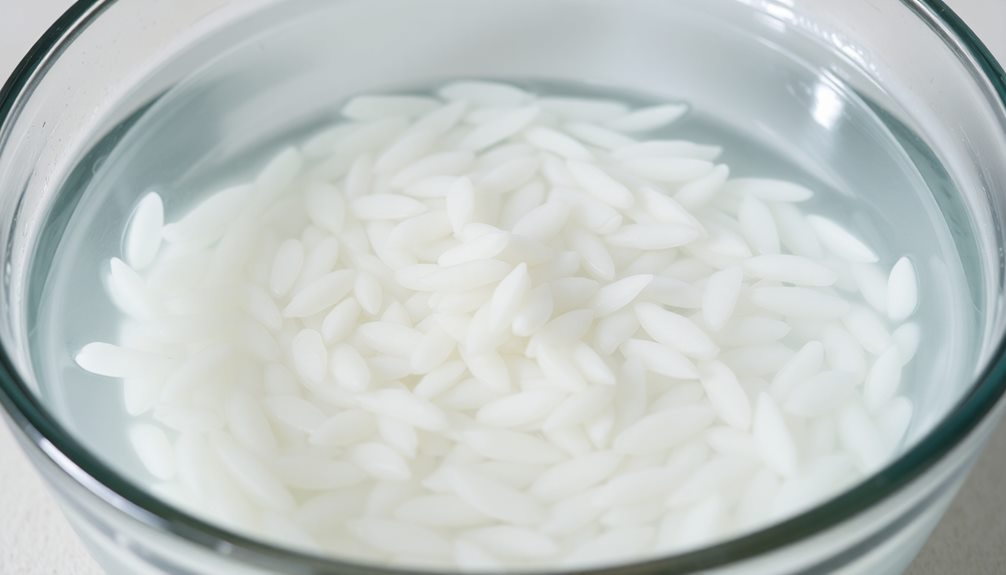
To begin the rice-soaking process, soak the rice overnight. This important first step helps soften the grains, making them easier to work with later. Simply place the rice in a large bowl and cover it completely with water. Let it sit at room temperature for at least 8 hours, or overnight. This allows the rice to fully hydrate and become pliable.
In the morning, you'll notice the water level has decreased as the rice has absorbed it. Drain the rice through a fine-mesh strainer, discarding the soaking water.
Give the rice a gentle rinse under running water to remove any excess starch. The soaked rice is now ready for the next steps in creating the perfect bánh dày. This simple yet essential preparation ensures the rice cakes will have the perfect soft and chewy texture.
With the rice soaked and ready, you can move on to the following steps with confidence.
Step 2. Grind Soaked Rice Into Smooth Paste

With the rice soaked and ready, you'll now want to grind it into a smooth paste. Grab your trusty blender or food processor and add the drained, soaked rice. Start pulsing the machine, letting it gradually build up speed. As it whirs, the rice will transform from grainy to velvety smooth.
Keep a close eye on the mixture, stopping to scrape down the sides as needed. You'll know it's ready when the paste is silky and free of any lumps or bumps.
Now, transfer the smooth rice paste to a large bowl. Use your hands to knead and work the mixture, ensuring it's completely uniform in texture. This extra step helps develop the rice's natural stickiness, which is essential for creating the perfect bánh dày.
Once the paste is ready, you can move on to the next stage of the process – steaming the cakes. Get excited, because you're one step closer to enjoying this authentic Vietnamese delight!
Step 3. Steam Rice Cake

The steaming process is the key to transforming the smooth rice paste into the pillowy, translucent bánh dày cakes.
First, you'll want to prepare your steamer. Fill the bottom with water, then set a steaming basket or colander inside, making sure it doesn't touch the water. Next, scoop the rice paste into the basket, smoothing it out evenly. Cover the steamer and let the magic happen!
As the water boils, the steam will rise, gently cooking the rice. You'll know the cakes are done when they become slightly puffed and translucent, about 15-20 minutes.
Be careful not to open the lid too often, as this can disrupt the steaming and affect the texture. Once cooked, use a spatula to gently remove the bánh dày from the steamer. They should have a soft, cloud-like consistency that's perfect for enjoying on its own or with your favorite toppings.
Step 4. Let Rice Cake Cool
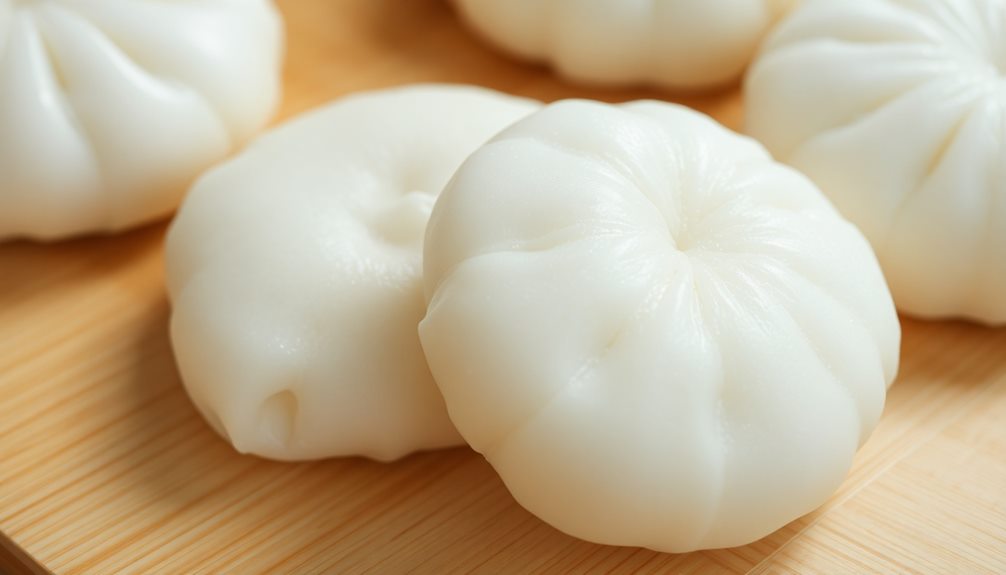
Once the steamed banh day cakes have finished cooking, it's crucial to let them cool before handling. This step is essential for ensuring the perfect texture and preventing any mishaps. As the cakes sit, they'll gradually release their steam, allowing the dough to firm up and become delightfully chewy.
Take your time with this process – rushing it could result in the cakes becoming too dense or even falling apart.
Once the cakes have cooled to a comfortable temperature, you can begin to handle them with ease. Gently peel the parchment paper away, being careful not to tear the delicate surface.
With the cakes now free, you can start to shape and mold them into your desired forms. Whether you choose to leave them whole or cut them into bite-sized pieces, the end result will be a mouthwatering treat that's sure to delight your senses.
Just be patient, and let the banh day cakes do their magic as they cool to perfection.
Step 5. Cut Into Pieces
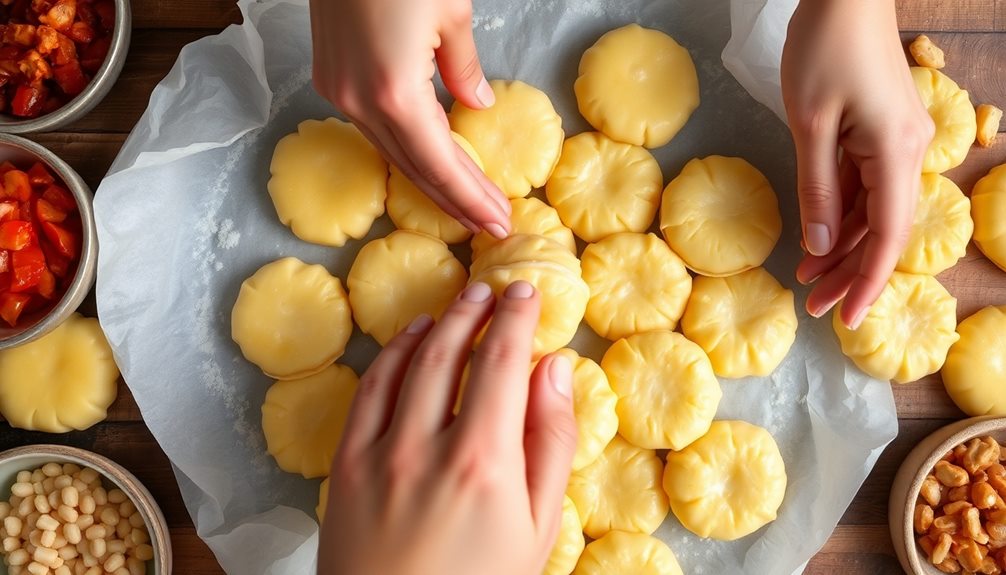
After the banh day cakes have cooled, you can start cutting them into bite-sized pieces.
Using a sharp knife, carefully slice the rice cakes into rectangular or square shapes, about an inch or two in size. You'll want to work slowly and gently to avoid tearing the delicate texture.
Try to keep the pieces uniform in size so they cook evenly. If the cakes are particularly sticky, you can lightly dust your knife with some flour to prevent them from sticking.
Once you've cut the banh day into perfect little bites, arrange them on a serving platter or plate. This makes them easy to pick up and enjoy.
The compact size is perfect for popping the whole piece into your mouth, allowing you to savor the chewy, sticky goodness.
With the cakes cut into shareable portions, they're ready to be served alongside your favorite dipping sauces or as part of a larger Vietnamese feast.
Final Thoughts

As we bid farewell to the world of bánh dày, you can't help but marvel at the ingenuity and cultural richness embedded within this Vietnamese rice cake.
From its humble beginnings as a staple food, bánh dày has evolved into a beloved delicacy, showcasing the resourcefulness and creativity of the Vietnamese people.
What truly sets bánh dày apart is its ability to transcend the boundaries of a mere snack. It's a testament to the enduring traditions and resilience of Vietnamese culture, passed down through generations.
Each bite offers a glimpse into the country's culinary heritage, a harmonious blend of textures and flavors that reflect the diversity of the nation.
As you savor the final pieces, you're left with a deeper appreciation for the artistry and care that goes into crafting these delightful rice cakes.
Bánh dày isn't just a food – it's a window into the heart and soul of Vietnam, a delicious celebration of the country's vibrant spirit.
Frequently Asked Questions
What Is the Typical Serving Size for Bánh Dày?
The typical serving size for bánh dày varies, but you can generally expect a small portion, usually around 2-3 pieces. The size and weight can differ, but it's typically meant to be a light snack or side dish.
Can Bánh Dày Be Made in Advance and Frozen?
Yes, you can make bánh dày in advance and freeze it. The rice cakes freeze well and can be thawed and reheated when you're ready to enjoy them. This makes them a convenient snack or side dish.
Are There Any Common Variations or Fillings for Bánh Dày?
Yes, there are several common variations and fillings for bánh dày. You can find versions stuffed with mung bean, pork, shrimp, or sweet fillings like banana or coconut. The possibilities are endless for customizing this versatile Vietnamese treat.
How Long Does It Take to Prepare Bánh Dày?
Preparing bánh dày takes some time, usually around 2-3 hours. You'll need to soak the rice, steam it, then mold and steam the cakes. The process involves several steps, but the result is a delightfully soft and chewy Vietnamese rice treat.
What Is the Shelf Life of Freshly Made Bánh Dày?
Freshly made bánh dày has a short shelf life. It'll stay fresh for about 2-3 days when stored in an airtight container in the refrigerator. After that, the texture and flavor start to degrade.


